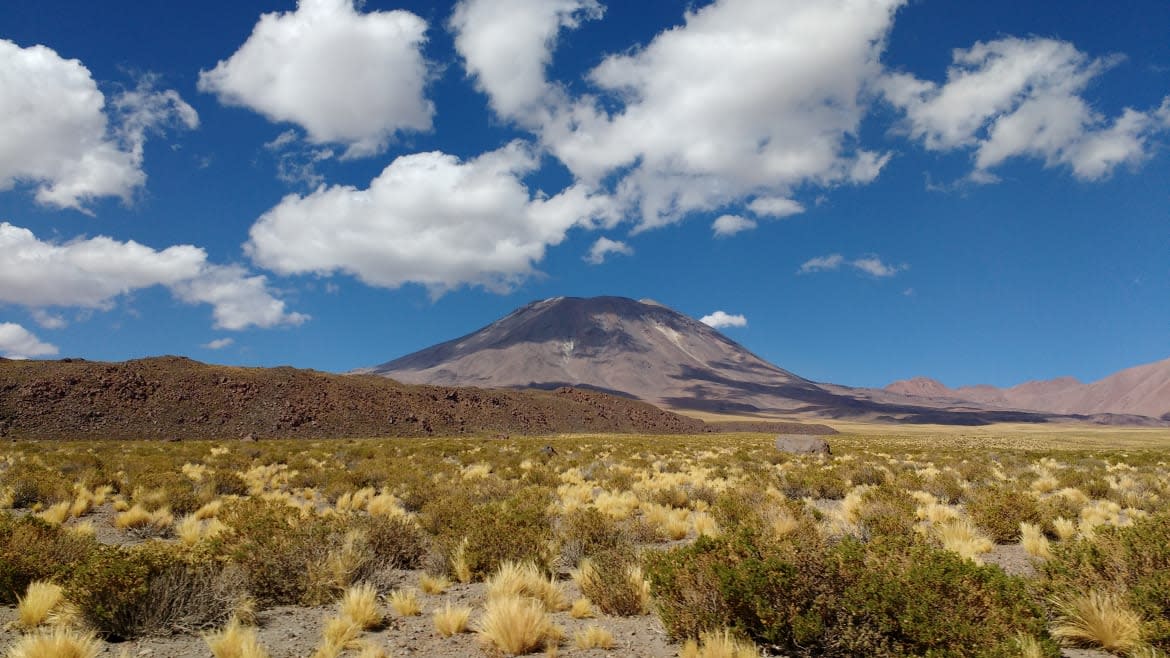A ‘Genetic Goldmine’ in Chile’s Desert Could Help Create New Drought-Resistant Crops

The Atacama Desert in Chile is the driest place on Earth outside of the North and South Poles. Yet it’s teeming with plant life that has evolved to cope with limited water and nutrients, a high-altitude environment that’s exposed to high amounts of radiation from sunlight, and extreme temperature changes that shift 50 degrees between night and day. That makes them the perfect specimens to study in order to develop crops that can grow in a world decimated by climate change.
In a massive 10-year study published in Proceedings of the National Academy of Sciences (PNAS), a group of scientists examined the genomes of dominant plant species and important soil microbes from the Atacama, and identified 265 genes that play a heavy role in adapting these plants to the harsh desert conditions. The authors describe these findings as a “genetic goldmine” that could help scientists breed more resilient crops able to withstand the drier climates expected to arise during climate change-induced droughts.
The need to engineer new crops has never been more crucial. Droughts around the world are more frequent and more devastating with each passing year. From 2010–2018, about $116.7 billion in crops and livestock in the developing world was lost due to droughts.
Millions of Locusts Destroying Crops and Food in Horn of Africa Could Become a Plague: U.N.
“The Atacama desert is like a perfect natural laboratory to study what an arid world would look like,” Rodrigo Gutierrez, a Chilean researcher and a coauthor of the new study, told The Daily Beast. “This is an ecosystem-level study. We basically characterized all the plant species that live here, and nailed the most important ones and what we can learn from them.”
To identify the genes of interest, the researchers chose to study 32 dominant plant species native to Atacama, and compared their genomes to the genomes of 32 other “sister” species found in more comfortable environments. That comparison highlighted 265 genes that seemed to have mutated as a response to adapting to the desert. Some of those genes are associated with the ability to better survive with less water, the regulation of biochemistry to deal with nutrient-poor soils, and increased tolerance to brutal radiation.
Besides helping future farmers grow crops in dry areas, study coauthor Gloria Coruzzi, from New York University, pointed out a few other ways the new findings could be applied. One was the way the study identified genes that help modulate the nitrogen needs of these plants. Nitrogen content is low in desert environments, and breeding crops that require less nitrogen would help eliminate the need to make huge amounts of industrial fertilizer—one of the biggest contributors to greenhouse gas emissions.
Other genes, Coruzzi said, could help scientists grow biofuel crops on marginal soils so there is less of a competition for fertile land between food crops and biofuel crops in the U.S.
The new findings won’t lead to new miracle foods to grow overnight. But some urgency—maybe highlighted by the UN COP26 climate conference this week—could help spur some long overdue innovation for the agricultural industry to move with haste.
Got a tip? Send it to The Daily Beast here
Get our top stories in your inbox every day. Sign up now!
Daily Beast Membership: Beast Inside goes deeper on the stories that matter to you. Learn more.

 Yahoo News
Yahoo News 
